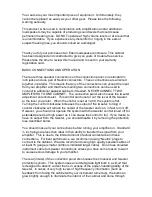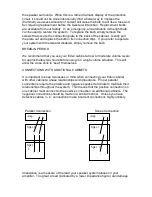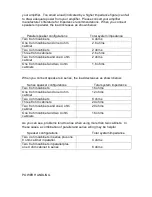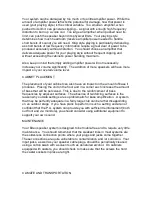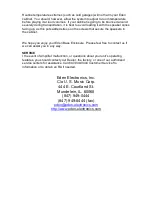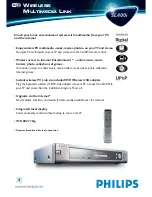
Your ears are your most important piece of equipment. Unfortunately, they
cannot be replaced as easily as your other gear. Please take the following
warning seriously.
This product, when used in combination with amplification and/or additional
loudspeakers may be capable of producing sound levels that could cause
permanent hearing loss. DO NOT operate at high volume levels or at a level that
is uncomfortable. If you experience any discomfort or ringing in the ears or
suspect hearing loss, you should consult an audiologist.
Thank you for your purchase of an Eden loudspeaker enclosure. This cabinet
has been designed and constructed to give you years of trouble-free service.
Please take the time to review this manual and to send in your warranty
registration card.
BASIC CONNECTIONS AND OPERATION
There are three speaker connections on the connection panel: one standard
¼
inch jacks and one pair of Neutrik connectors. These connections are all wired
together in parallel. This means that any of the connections can accept the input
from your amplifier and that the remaining two connections can be used to
connect to additional speaker cabinets if desired. NEVER CONNECT TWO
AMPLIFIERS TO ONE CABINET. The connection panel also houses the tweeter
adjustment potentiometer. This control can boost or cut the level of the tweeter
to the level you prefer. When the control is set at 12:00, the system is flat.
Turning the control clockwise increases the output of the tweeter; turning it
counter clockwise will reduce the output of the tweeter and can, in fact, turn it off.
However, you should not operate the system with the tweeter control tuned off for
extended periods at high power as it can cause the control to fail. If you desire to
have no output from the tweeter, you should disable it by removing the protection
fuse described below.
You should make all your connections before turning your amplifier on. Standard
¼
inch plugs are less than ideal in their ability to transfer the signal from your
amplifier. This is due to the limited amount of actual contact area in these
connections. For best performance, we recommend using “Neutrik” plugs to
connect to the cabinet. We also recommend using high quality speaker cables of
at least 16 gauge (smaller numbers indicated larger cable). Do not use shielded
instrument cable for speaker connections unless you have some reason to want
to cause serious damage to your amplifier.
The rear (inside) of the connection panel also houses the crossover and tweeter
protection system. This system uses an aircraft-grade light bulb in a circuit that
is designed to absorb current that is in excess of the power-handling ability of the
tweeter. In cases of very high levels of high frequency information (such as
feedback from facing the cabinet with your instrument turned up), the bulb can
glow brightly enough to illuminate the interior of the cabinet and shine through


